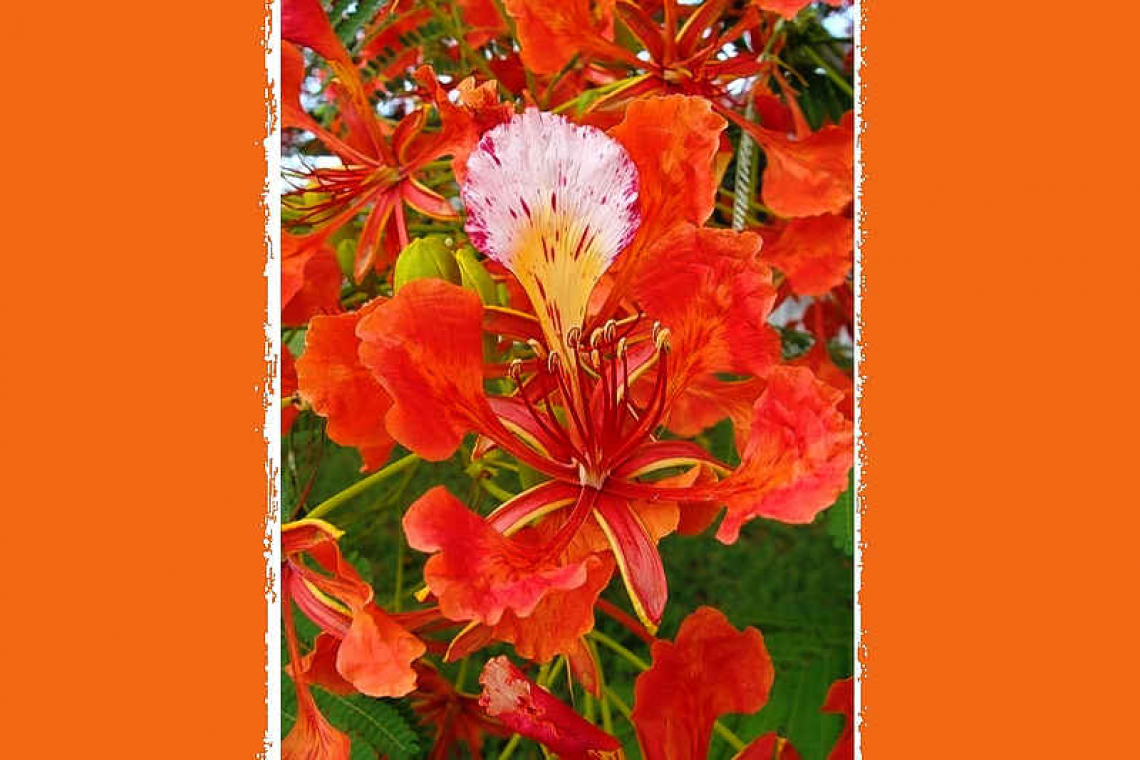We’re sure you’re noticing the beautiful flamboyant trees, maybe on the way to school as you pass the Emilio Wilson Estate, or somewhere else on the roadside. The big, shady trees are bursting with bright orange-red flowers – what a lovely sight!
The flamboyant tree is considered a national symbol, on both the Dutch and French sides of the island. Here, it stands for unity and emancipation. It is also a national symbol in St. Kitts and Nevis. In fact, the tree and its flowers are both iconic and symbolic on many Caribbean islands.
The scientific name of the flamboyant tree is “Delonix regia”, which comes from the Greek words “delos” (meaning conspicuous) and “onyx” (meaning claw). “Claw” refers to the flowers.
The flamboyant tree goes by many names, such as Poinciana, Royal poinciana, Flame of the Forest, Flame tree, Gulmohar, Peacock tree, Shack-Shack tree, and July tree. “July tree” is one of the names used here on St. Maarten, and you can guess why: It’s July now, and we are enjoying the peak of the flowers’ beauty.
And “Shack-Shack”, as it is called in St. Kitts, is connected to a sound. When shaken, the seed pods make a rattling sound. The seeds are not eaten, but can be used in instruments or crafts.
The plant is originally from Madagascar, which is a very big island in the Indian Ocean, just off the coast of Mozambique in southern Africa. Madagascar has very diverse and special flora and fauna.
The flamboyant tree was introduced to the Caribbean region by Monsieur de Poincy, who was the first French governor of St. Kitts. That’s why one name for it is “Poinciana”.
Besides the fiery orange-red flowers, flamboyant trees can also have bright yellow flowers.
The trees bloom from May to August or September, with their peak around now, July. The trees grow very big and tall – up to 40 feet high and 40-60 feet wide. The roots go deep into the ground and the trees are strong and sturdy. They do well in dry climates, but they don’t have flowers all year round.







